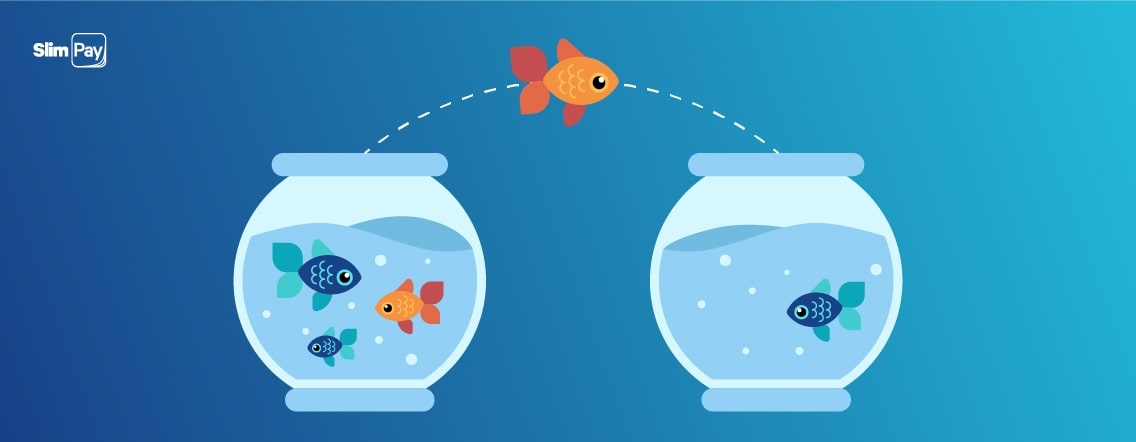Solutions to prevent churn
In the modern market, the customer is the king. This is especially true for SaaS companies and subscription-based businesses. Customers have access to a myriad of options and cancelling a service is as easy as a click of a button. But intense competition is not the only problem: the lack of interaction, services that do not meet expectations or unfriendly interfaces are other reasons for the loss of customers or churn. In this article we will focus on some strategies to reduce churn for recurring revenue businesses.
Customer retention is a priority for all companies, especially if we consider that getting a new customer is seven times more expensive than retaining an existing one. In addition, a slight increase in customer retention of 5% can increase profits up to 25% or 95%.
Before looking for solutions to prevent churn, you have to understand how and why it happens. A distinction must be made between voluntary and involuntary churn. Voluntary churn occurs when the client decides to finish the subscription. The causes of voluntary churn can be very varied: price, user experience, problems with the onboarding, intervention of competitors, etc. On the other hand, involuntary churn occurs mainly due to payment issues.
Once you segment the reasons and types of churn, you can go a step further and implement strategies to reduce churn and improve your customer retention. Here are 6 strategies to reduce churn for your recurring business.
1. Create a simple, fast and easy onboarding process
It might sound very basic, but offering an easy way to subscribe to a service, followed by good assistance can be the key to attract more customers and, most important, retain them.
In the digital age, simple, fast and easy is the norm. If a person doesn’t understand how to use your product, they will leave. Having a simple onboarding strategy will allow your customers to discover the benefits and value of your services in a short time, saving them precious time trying to understand how to use it. Onboarding is the crucial moment in your relationship with the consumer. It is the first direct contact of the customer with the product or service and that will lead on their registration or their churn.
2. Increase customer loyalty and commitment
Once the clients have passed the onboarding process, it will be necessary to maintain a continuous and enriching relationship. This requires three ingredients: honesty, transparency and personalisation.
To highlight honesty and transparency, do not create false expectations and end up not only losing a customer, but losing an unhappy one who wasn’t a good fit for your business from the beginning.
It is crucial to create a special relationship with the customer in order to win his/her loyalty. A customer satisfied with the company’s values and actions will be loyal and will not leave when the competition offers a similar product. You can contact your customers to remind them why they chose you and thank them for it. You can even offer incentives and upgrades to the most profitable customers or those who have purchased a new product. About 80% of people are more likely to support a company that has offered them some kind of incentive. And finally, don’t hesitate to ask your client’s opinion, about what they like and even more important what they don’t like. You will get quality feedback and sometimes it is better to have clients that speak up, than quiet ones.
3. Improve customer service
The customer is subscribed, trusts your values and uses your service. Now you have to try to make your long-term relationship a stable one, and that is where customer service comes into play.
Customer service employees are the representatives of the company and the human face of it. One of the main reasons for churn is unfortunate customer service experience. Over 59% of customers, even if they are satisfied with the service or product, will stop supporting a company after only one bad customer service experience. Customers expect a consistently good quality of customer service as part of the commercial offer.
4. Listen to your customers
More than 68% of customers leave because they think the company doesn’t care about them. There will be many customers who express their desire for new features or improvements. If these improvements are incorporated, do not hesitate to send a personalised message to the ones who have requested it, so that they will feel heard and valued.
But as we mentioned earlier, quiet customers are important too. It is very important to keep track of inactive accounts and try to contact them to understand the reasons for their inactivity. Many times, it’s not just that a customer doesn’t use your service or product, but that they don’t use it enough to make a profit.
5. Recover failed payments
Inactive customers often become unwilling quitters. If there is a failed payment for a subscription you don’t even use, you will probably not even notice. That results in almost half of the total of payments errors in the subscription economy.
There are a variety of options to avoid failed payments that you can put in place in your subscription business. The main reasons are the loss or the expiration of the credit card and the expiration of the subscription period. You can automatically send emails or messages before the payment is due. You can even think about an email about the card expiration and a gentle reminder to update the payment information. Our best advice for you would be to propose several payment methods to your clients.
6. Optimise the cancellation flow
As we mentioned in the first step, we prefer everything that is simple, fast and easy, even when it comes to cancelling a subscription. If the cancellation process is fast, the customer will keep a good memory of the company and who knows, maybe someday he/she will return. But even if the process is easy, don’t forget to remind them of all the benefits of your services and everything they will lose if they leave.
We like it easy, but we also like to have options. If the customer thinks that they no longer need your services, you can suggest an alternative. Depending on the product or services you offer, this alternative may be to change the subscription plan with a downgrade or to simply have the possibility to pause the service for a certain amount of time.
In a world with plenty of options, a good product is not enough to reduce or prevent churn. Customer satisfaction is essential and you will need to focus on the entire journey, from the time of subscription to cancellation and implement the best strategies to reduce churn for your business. And remember: the relationship with the client does not end, until it ends.




